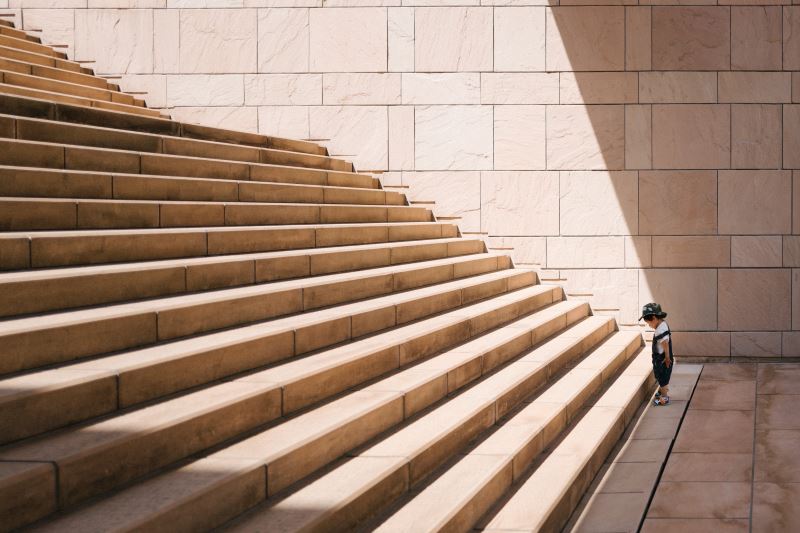Acrophobia, or a fear of heights, can affect people in different ways depending on the severity of the condition. It’s for this reason that the emotional, physical and psychological symptoms that it causes can vary from person to person.
In this article, we’re going to delve into the symptoms of acrophobia, how they’re triggered and the ways in which they can be minimised. Let’s get started!
Acrophobia symptoms
When a person with acrophobia is facing down their fear, they may experience an intense level of panic and anxiety. This can trigger a variety of emotional, physical and psychological symptoms.
Emotional symptoms
People with acrophobia can experience an intense fight-or-flight reaction when their condition is triggered. This can lead to a swath of emotions, ranging from full blown panic and distress to anger and confusion. These types of emotions can be extremely overwhelming, which can make it difficult to talk and even cause temporary paralysis.
Physical symptoms
In addition to the emotional turbulence that may be triggered by heights, people with acrophobia can also experience a vast range of physical symptoms, including:
- Shortness of breath
- Dizziness
- Light-headedness
- Heart palpitations
- Shaking
- Intense sweating
- Paralysis
- Nausea
- Dry mouth
In order to stabilise themselves or minimise these symptoms, a person might drop to their knees, crawl or grab onto the nearest person/object.
Psychological symptoms
People with acrophobia may experience varying degrees of anxiety when thinking about, talking about or looking at heights, in addition to being in high places. This can be exacerbated by an intense fear that something bad will happen when in a high place, such as falling or tripping.
The result of this anxiety and fear is often avoidant behaviour. To prevent their acrophobia symptoms from being triggered, sufferers tend to avoid coming into contact with the object of their fear. As the severity of acrophobia varies from person to person, this could mean anything from not meeting up with friends who live in high rise flats to not watching movies which involve climbing.
Though this behaviour can help people avoid triggering their symptoms, it can cause them to restrict their lifestyle and miss out on opportunities to advance professionally and socially.
What can trigger acrophobia symptoms?

The symptoms of acrophobia can be triggered by a wide range of scenarios depending on the individual. These include:
- Walking up a flight of stairs
- Climbing a ladder
- Standing on a chair
- Being on a roller coaster
- Staring out of a window of a tall building
- Standing on a balcony
- Going over a bridge
Acrophobia symptoms aren’t just tied to the physical experience of heights, though. Just thinking or talking about heights could be enough to trigger an emotional, physical or psychological response. This is why people with acrophobia require different types of treatment to tackle their condition.
How severe are the symptoms of acrophobia?
As we’ve touched upon already, the severity of acrophobia symptoms varies from person to person. Some people only experience minor symptoms in certain scenarios, whereas others go through the full range of emotional, physical and psychological symptoms.
The effect that this has on a person’s life also depends on the individual. For some, it is a mild inconvenience that they have to deal with from time to time. For others, it’s something that disrupts their entire life and stops them from being able to adequately function at work or in social situations.
In the latter instance, people may follow their avoidance strategies religiously to avoid facing these debilitating symptoms. Unfortunately, this can further the severity of their symptoms when they accidentally encounter their fear.
How can I minimise these symptoms?

Though there is no outright way to cure acrophobia, we’re going to discuss three common and effective forms of therapy that can help minimise its symptoms.
One way to get to grips with acrophobia symptoms is for a person to gradually expose themselves to what it is they fear so that they can learn to tolerate their body’s emotional, physical and psychological response. This is otherwise known as exposure therapy. In time, this therapy will help someone erase the negative association they have between themselves and heights.
Another method of minimising acrophobia symptoms is with cognitive behavioural therapy. This is all about focusing on changing the way that someone thinks about heights. For example, when someone is on the top floor of a building, they might convince themselves that they’re going to fall. With CBT, a person gradually learns that this type of scenario is unlikely to occur because they’re much safer than they think. It will teach them that their symptoms are just a natural response to something they fear and not evidence that they’re in danger.
The final option on our list is hypnotherapy. By enabling a therapist to access their subconscious mind, a person can get to the bottom of why they have a fear of heights and begin to reframe their mind so that they can think about and experience heights differently going forward.
Ready to climb above fear?
If a fear of heights is getting in the way of you living your life to the fullest, it’s time to make a change. With Climb Above Fear’s range of experienced therapists, you can get the treatment you need to face your fears and start a new life!
To get started today, head to our homepage and fill out our consultation form. We’ll then match you with one of our therapists who will recommend the best course of action.
Take the first step with us today and open up the door to a realm of new possibilities!



